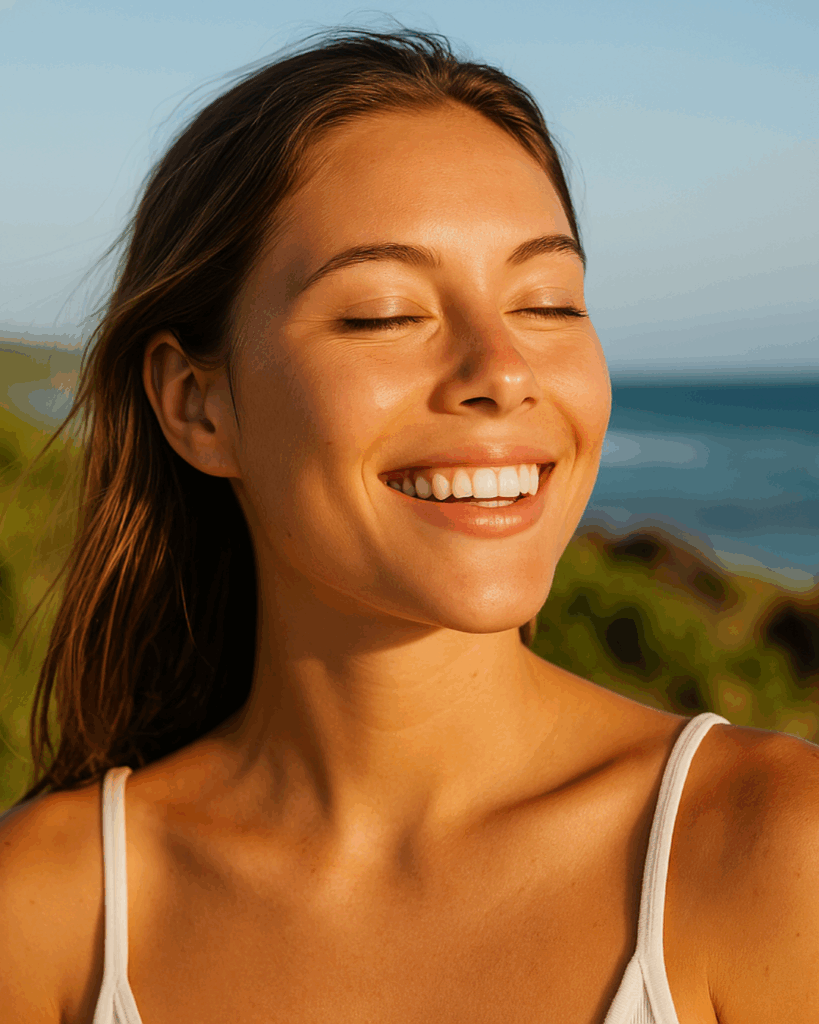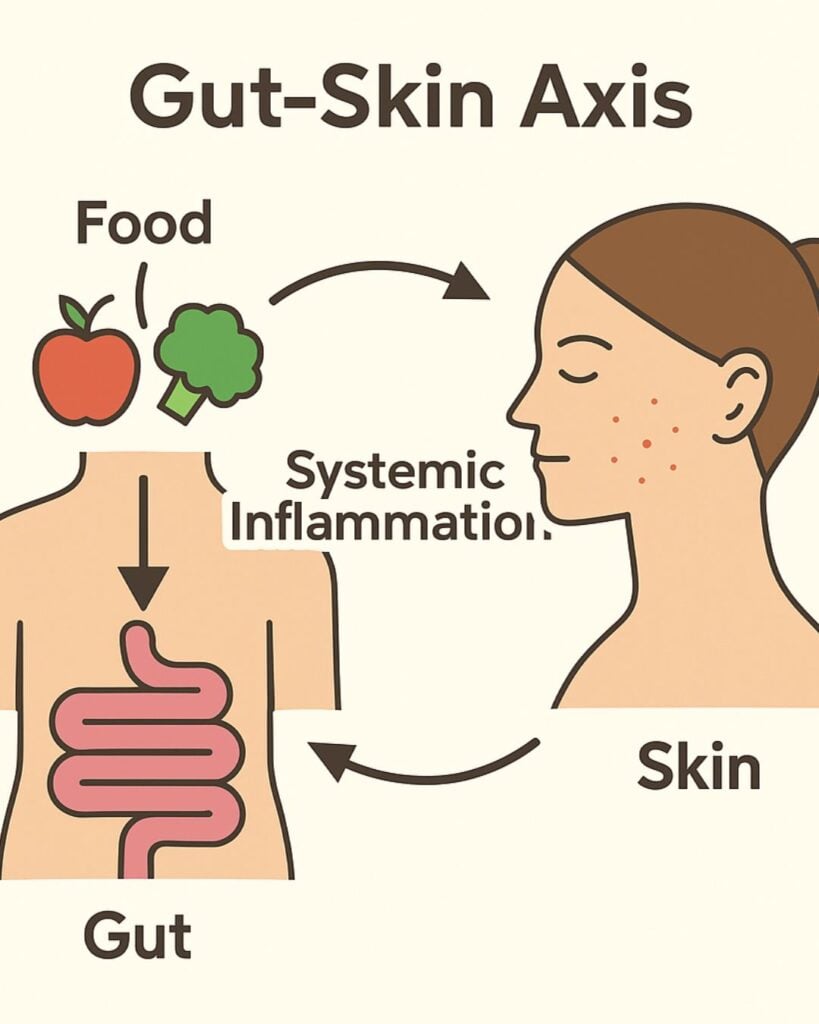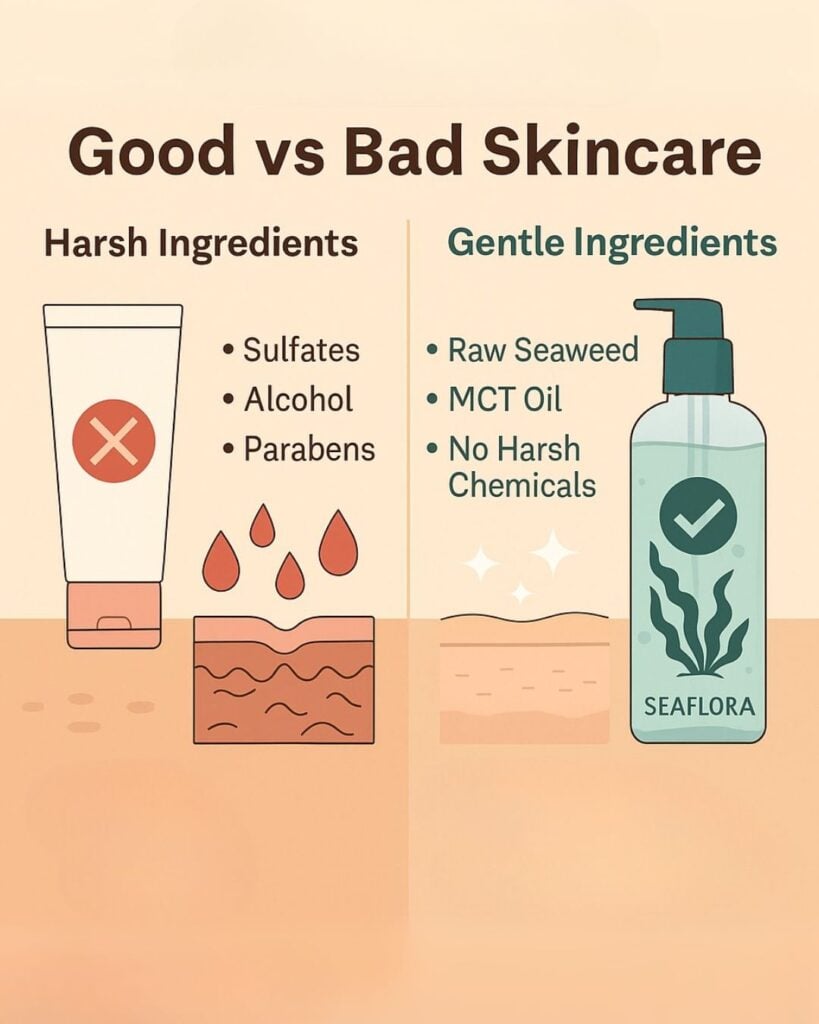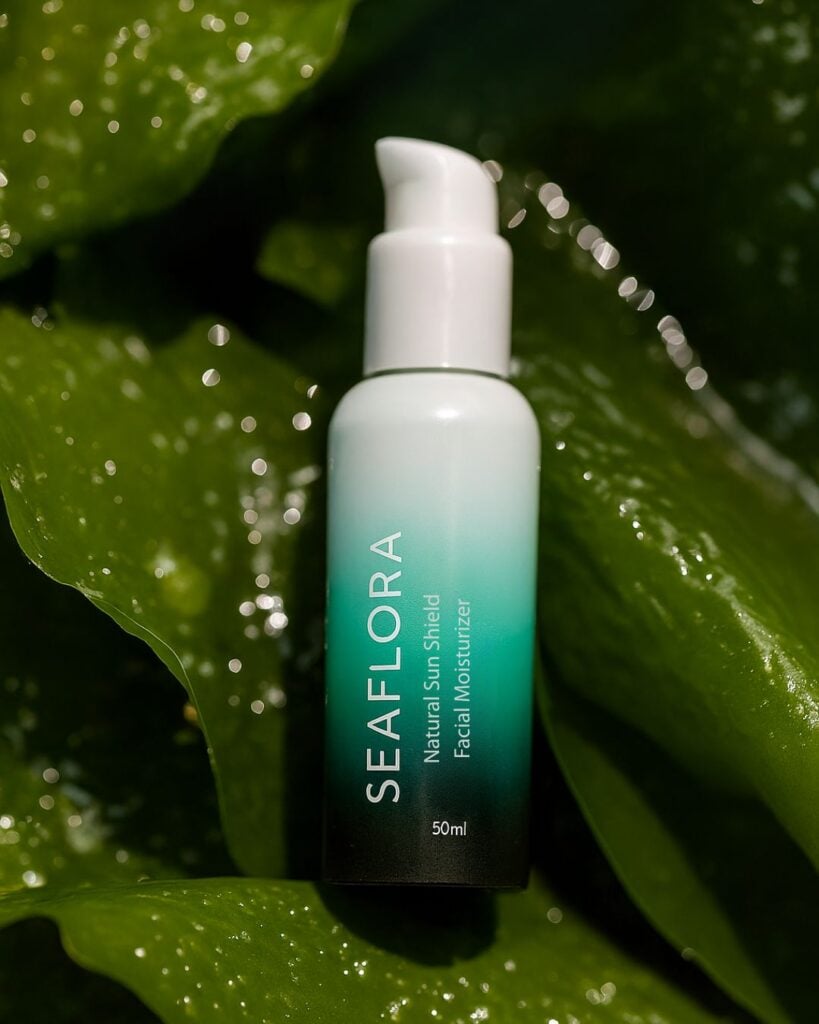5 Amazing Ways Your Microbiome Protects Skin from Sun

A groundbreaking study published in Science in June 2022 by Stanford Medicine researchers revealed a concerning trend: infants in industrialized nations are increasingly missing a crucial gut bacterium, Bifidobacterium infantis, essential for digesting breast milk and laying the foundation for a healthy microbiome. This loss, which impacts a significant number of children, points to a growing concern about the fundamental health of our microbial communities, especially in our youngest generations.
While we often think of the microbiome in terms of gut health, the truth is, these microscopic allies play a profound and often overlooked role in many aspects of our well-being – including something as critical as sun protection.
Your Skin Microbiome: The Hidden Hero in Sun Protection

It’s time to shine a light on the incredible, intricate world of your microbiome—and its surprising connection to how your skin handles the sun. Far from being a passive barrier, your skin is a living, breathing ecosystem teeming with trillions of microorganisms. These microbial allies make up what’s known as your skin microbiome, and they’re far from idle when it comes to defending against UV radiation.
The Forgotten Microbiome on Your Skin
While the gut microbiome tends to dominate the wellness conversation, the skin microbiome deserves equal attention. Your skin—your body’s largest organ—isn’t just made of human cells. It’s also home to countless beneficial microbes that form the first line of defense against environmental aggressors like dirt, pathogens, pollutants… and the sun.
These microbes do more than sit on the surface. They produce antioxidant compounds that neutralize free radicals triggered by UV exposure. They also influence your skin’s immune response, helping reduce inflammation and even aiding in cellular repair after sun damage. When your skin microbiome is balanced and diverse, it acts like an invisible shield, fortifying your natural defenses against solar stress.
Sun Protection Starts in the Gut

But the story goes deeper—literally. Beneath the surface lies the powerful gut-skin axis, a two-way communication network between your digestive health and your skin’s behavior. The foods you eat shape the health of your gut microbiome, which influences systemic inflammation, nutrient absorption, and the construction of healthy skin cells.
Here’s a little-known truth: the types of fats you consume can determine how easily your skin burns. Omega-3 fatty acids, found in foods like wild fish, flaxseed, seaweed, and algae oil, help calm inflammatory responses and make the skin more resilient to UV exposure. In contrast, a diet high in processed seed oils or trans fats can heighten your skin’s sensitivity and slow repair mechanisms.
This inside-out approach to sun protection reminds us that glowing, resilient skin isn’t just about what you put on it—but also what you put in your body.
Your Skin’s Natural Sun Shield: How Microbes Defend You From UV Damage
Most people think of sunscreen as their only line of defense against the sun. But there’s a powerful, invisible force already working on your behalf—your skin microbiome. These trillions of microorganisms living on your skin do far more than protect against pathogens. Emerging research is uncovering their critical role in shielding your skin from UV damage.
Microbes That Eat Sun Damage: The Urocanase Discovery
A study in the Journal of Investigative Dermatology revealed that some skin-dwelling bacteria can detoxify harmful UVB byproducts using an enzyme called urocanase (UCA). When your skin is exposed to UVB radiation, it converts trans-urocanic acid (a natural UV absorber in your skin) into its more dangerous form: cis-urocanic acid (cis-UCA). This compound has been shown to suppress immune function and increase inflammation.
But here’s the twist: certain beneficial microbes—like Staphylococcus epidermidis—metabolize cis-UCA, rendering it harmless. The researchers observed a rapid shift in the skin microbiome after UVB exposure, with these UCA-positive strains multiplying quickly to neutralize the threat.
Within hours, not days, the skin responded by favoring bacteria that could protect it. When these beneficial microbes were removed, inflammation and tissue damage spiked dramatically.
Skin That Burns Less Starts in the Gut
While the skin microbiome responds to immediate sun exposure, your gut microbiome plays a foundational role in how your skin reacts to the sun in the first place. The connection, known as the gut-skin axis, shows that systemic inflammation, nutrient absorption, and skin cell structure are all influenced by gut health.
A critical factor here? The type of fats you eat.
- Diets rich in omega-3 fatty acids—found in wild fish, flax, seaweed, and algae oil—promote calm, resilient skin.
- On the flip side, diets heavy in pro-inflammatory oils like processed seed oils and trans fats increase your risk of burning and reduce your skin’s ability to repair after UV damage.
These internal choices directly affect the skin’s inflammatory response, immune regulation, and barrier repair—giving you yet another way to boost your natural UV defense from the inside out.
Bacteria vs. Burn: The Fast-Acting Skin Response
Microbes don’t just block UV damage—they also trigger your skin to heal. Bacteria that metabolize cis-UCA release metabolites that signal skin cells to strengthen their barrier, improve immune defense, and produce antioxidants that fight free radical damage.
One standout species, Micrococcus luteus, produces carotenoid pigments that act as a biological UV filter—absorbing radiation and preventing oxidative stress. Other strains, like Staphylococcus cohnii, have been shown to modulate local inflammation by boosting your skin’s natural glucocorticoid production.
When given the right environment, your skin microbiome becomes an active, intelligent system—not just surviving sun exposure, but adapting to it.
Modern Skincare: Helping or Harming?

Here’s where many skincare routines go wrong: they strip away the very microbes designed to protect us.
Common antibacterial cleansers, alcohol-based toners, and even preservatives in commercial sunscreen can disrupt your microbiome—removing urocanase-producing bacteria and weakening your first line of defense. Ironically, the more you try to protect your skin with synthetic products, the more vulnerable it becomes.
Instead, focus on microbiome-friendly skincare:
- Avoid harsh surfactants and antimicrobial agents.
- Support your skin with raw, wild seaweed-based formulations that contain natural prebiotics and antioxidants.
- Protect and nourish, rather than strip and sterilize.
Your Takeaway: Support the Microbiome, Support the Skin
Your skin microbiome isn’t just alive—it’s intelligent and responsive, adapting in real time to environmental stress like UV radiation. By feeding it the right foods (inside and out), you’re enhancing your body’s own natural resilience to sun damage.
At Seaflora Skincare, we believe the best sun defense starts with nature. That’s why we use whole, wild seaweed—never extracts—rich in natural mycosporine-like amino acids (MAAs) and prebiotic nutrients to support your skin’s microbial balance and repair.
Let your skin do what it was designed to do. Naturally.
How Dietary Oils Sabotage Your Skin’s Sun Resilience
Beyond your microbiome, another critical—but overlooked—player in your skin’s sun sensitivity is the fat embedded in your skin cells. One type in particular is causing a world of damage: linoleic acid (LA).
LA is a polyunsaturated omega-6 fat commonly found in vegetable oils like soybean, corn, sunflower, and canola. Despite their “heart-healthy” marketing, these oils are anything but. LA accumulates in your skin cells, making them vulnerable to oxidative stress and UV-induced inflammation.
How Linoleic Acid Ends Up in Your Skin
Every four weeks, your skin produces a new layer of keratinocytes—cells that start deep in the epidermis and eventually become part of your outermost skin barrier. These cells build their membranes from circulating fats. If your diet is rich in LA, that’s what your body uses.
Even if you stop eating LA today, it’s still stored in your tissues and will be used in new skin cells for months, even years—unless you actively replace it.
How to Replace LA With Skin-Resilient Fat: C15:0
The good news? Your body can swap out harmful LA if given the right replacement. Enter C15:0, also known as pentadecanoic acid—a healthy, odd-chain saturated fat naturally found in small amounts in raw, grass-fed dairy, butter, and ghee.
Unlike LA, C15:0 has no double bonds, making it stable and resistant to oxidative stress. It integrates into your skin cell membranes, fortifying them against UV damage and reducing inflammation.
Recent studies now suggest C15:0 may be an essential fat, meaning the body doesn’t produce enough of it on its own and it must be obtained through diet.
The C15:0 Protocol: How to Support Skin Turnover and Reduce LA Load
1. Cut Out LA Sources From Your Diet
Remove seed oils (soybean, corn, canola, sunflower, grapeseed) and avoid processed foods, condiments, and grain-fed meat.
2. Add 2 Grams of C15:0 Daily
Use pure pentadecanoic acid or high-C15:0 ghee or butter oil. Split the dose with meals.
3. Monitor Your Fatty Acid Levels Quarterly
Use a red blood cell or dried blood spot test.
- Goal: C15:0 ≥ 0.4%, LA ≤ 5%
4. Encourage Turnover With Strategic Lifestyle Changes
- Short high-intensity workouts
- Infrared sauna or cold/hot contrast therapy
- Intermittent fasting (use sparingly to avoid thyroid suppression)
5. Practice Smart Sun Exposure
Avoid solar noon until LA is cleared. Embrace gentle sunlight during off-peak hours. Skip conventional sunscreens in favor of:
- Astaxanthin
- Niacinamide
- Vitamin E
- Seaflora mineral-based sun protection with MAAs + non-nano zinc
Final Thoughts: Rebuilding Resilience is an Inside Job
Sun protection doesn’t start with SPF. It starts with what you eat, what you put on your skin, and how you support your body’s natural defense systems.
By combining a low-LA diet with C15:0 supplementation and microbiome-friendly skincare, you’re not just protecting yourself from sunburn—you’re building long-term resilience from the inside out.
Frequently Asked Questions (FAQs) About the Skin Microbiome and Sun Resilience
Q: What role do skin bacteria play in protecting against sun damage?
A: Your skin’s microbiome is more than just a passive passenger. Certain beneficial bacteria, like Staphylococcus epidermidis, actually help detoxify harmful UV byproducts. These microbes produce an enzyme called urocanase, which breaks down cis-urocanic acid—a UVB-triggered compound known to suppress immune function and ramp up inflammation. When these good microbes are thriving, your skin stays calmer, repairs faster, and is less prone to UV-induced damage.
Q: How does UV exposure affect the skin microbiome?
A: Sunlight isn’t just a threat—it’s a signal to your skin’s ecosystem. After UVB exposure, your microbiome naturally shifts to favor protective, urocanase-positive bacteria. These strains multiply rapidly, helping to defend your skin within hours. Studies show that areas rich in these microbes show less redness and inflammation, while sterilized areas—lacking microbial protection—experience more severe sun damage.
Q: Why should we be cautious with antibacterial skincare products and chemical sunscreens?
A: Most conventional products treat your skin like a battlefield—killing everything in sight, including your beneficial microbes. Antibacterial cleansers, alcohol-heavy toners, and synthetic sunscreens can all disrupt the balance of your skin microbiome. While they might offer short-term protection, they undermine long-term resilience by stripping away your first line of defense. At Seaflora, we recommend microbiome-safe skincare rooted in raw, whole seaweed, not sterilizing synthetics.
Q: What are mycosporine-like amino acids (MAAs) and how do they protect the skin?
A: MAAs are UV-absorbing compounds naturally found in seaweed, especially red and green macroalgae. They act as cellular sunscreens, shielding against UVA and UVB while preventing oxidative stress and inflammation. Seaflora uses whole, wild seaweed, ensuring that the skin receives MAAs in their natural, bioavailable form, supported by the cofactors your skin needs for optimal function.
Q: What’s the difference between macroalgae and microalgae in skincare?
A: Macroalgae refers to whole seaweeds like kelp and dulse—the kind we hand-harvest on the BC coast. It contains complete nutritional profiles, including minerals, antioxidants, polysaccharides, and MAAs. Microalgae, like spirulina or chlorella, are single-celled organisms often used in powdered extracts. While they offer benefits, macroalgae delivers whole-food skin nutrition, making it the gold standard for real results—especially when used fresh, not extracted.
Q: How does coconut oil contribute to natural SPF?
A: Unrefined coconut oil offers a mild, natural SPF of around 4–6, thanks to its saturated fat profile and antioxidant compounds. While not a substitute for full-spectrum protection, it’s an excellent skin-conditioning base, especially when paired with MAAs and mineral filters like non-nano zinc oxide. At Seaflora, we often blend coconut oil with seaweed oil and MCT to mimic the skin’s lipid barrier and boost moisture retention—without disrupting your microbiome.
Q: What makes skin-identical oils like MCT so beneficial for sun-exposed skin?
A: MCT (medium-chain triglyceride) oil closely resembles the sebum naturally produced by your skin. It absorbs easily, doesn’t clog pores, and helps deliver fat-soluble antioxidants deeper into the epidermis. When combined with whole seaweed, it acts as a carrier for minerals, polysaccharides, and UV-protective bioactives—supporting skin regeneration, hydration, and resilience after sun exposure.
Q: What is the connection between diet, skin health, and sun resilience?
A: The fats you eat determine how your skin responds to sunlight. Diets high in linoleic acid (LA)—found in seed oils and grain-fed meat—make skin more prone to oxidative stress and sunburn. Replacing LA with C15:0 (pentadecanoic acid) from grass-fed dairy helps build stronger, more UV-resistant skin cells. It’s an inside-out approach to resilience—and it works.
Q: How can I support my skin’s natural sun defenses effectively?
A: Here’s a holistic protocol we stand behind:
- Avoid high-LA foods like vegetable oils and factory-farmed meat.
- Add 2g of C15:0 daily from grass-fed dairy or supplements.
- Use mineral-based sun care like zinc oxide paired with whole seaweed and MCT.
- Support your microbiome with non-stripping, food-grade skincare.
- Incorporate intermittent fasting, sauna use, and high-intensity workouts (in moderation) to help clear stored LA.
- Embrace sunlight slowly, starting with early mornings and late afternoons.
Together, these changes don’t just reduce your risk of sun damage—they build a stronger, smarter skin barrier that can handle the elements with grace.
References
- Science, Stanford Medicine Study on Infant Microbiome (2022)
- The Journal of Investigative Dermatology, cis-UCA Microbial Metabolism Study
- Frontiers in Microbiomes: UV Response in Skin Microbiota
- Mechanisms of UV-Induced Sunburn (NCBI)
- Staphylococcus cohnii Modulates Inflammation – Atopic Dermatitis Study
- LA Half-Life in Human Tissues
- Keratinocyte Turnover Timeline
- Lipid Transport and Albumin Role in Skin
- C15:0 Stability and Resistance to Peroxidation
- Pentadecanoic Acid as an Essential Fatty Acid
- Linoleic Acid Induces Metabolic Reprogramming and Inhibits Oxidative and Inflammatory Effects in Keratinocytes Exposed to UVB Radiation



